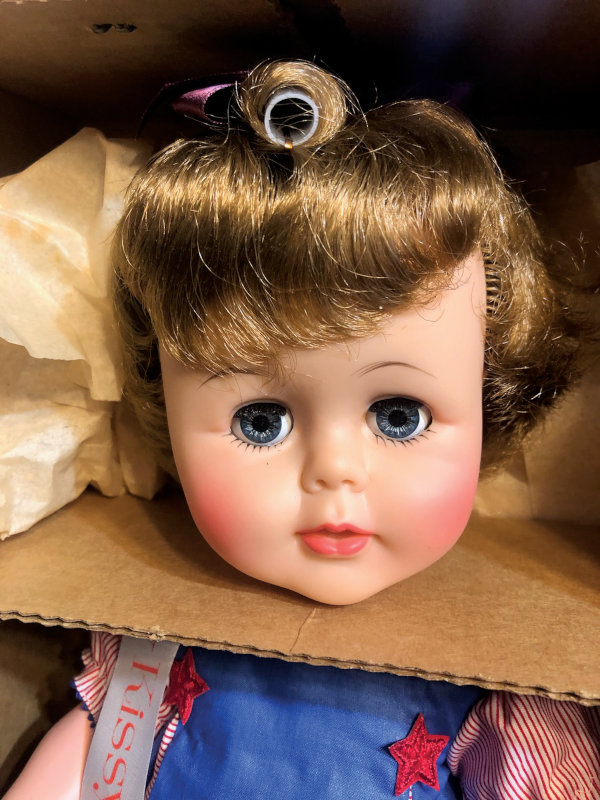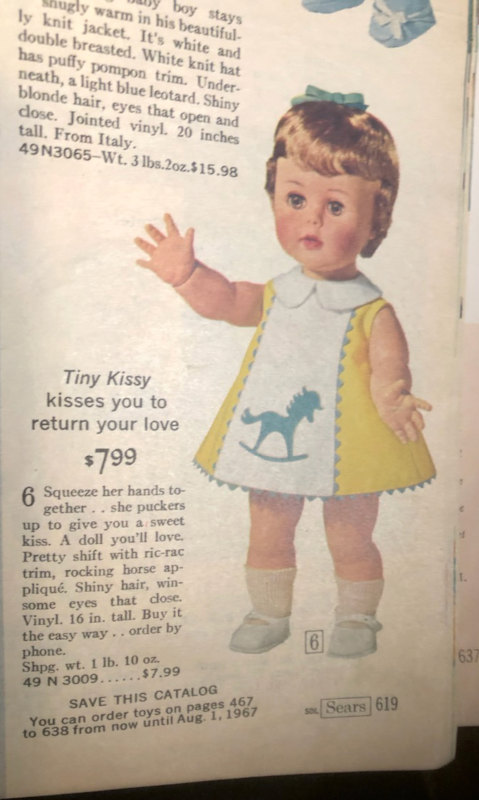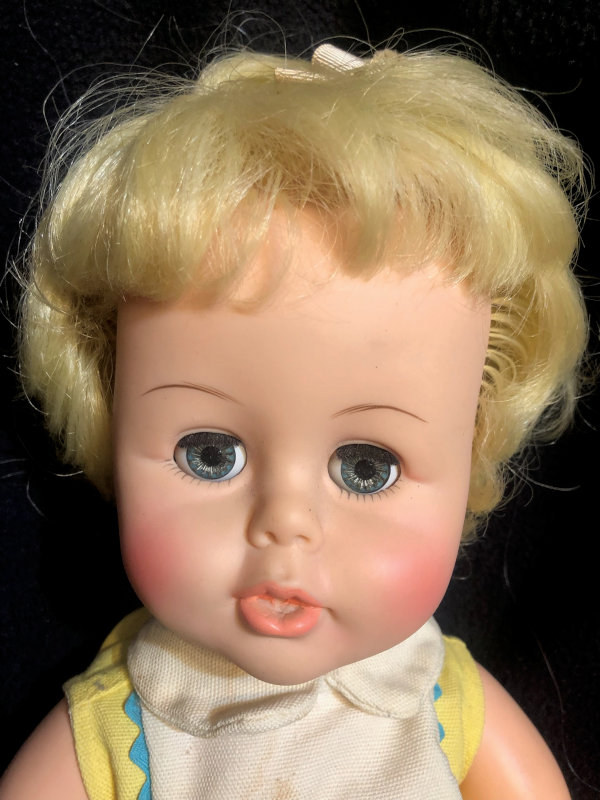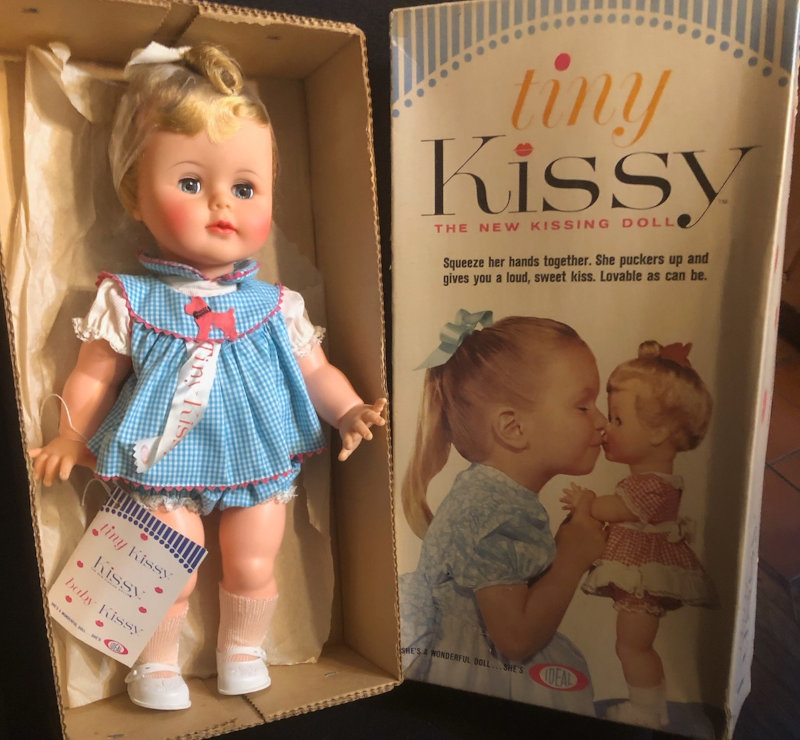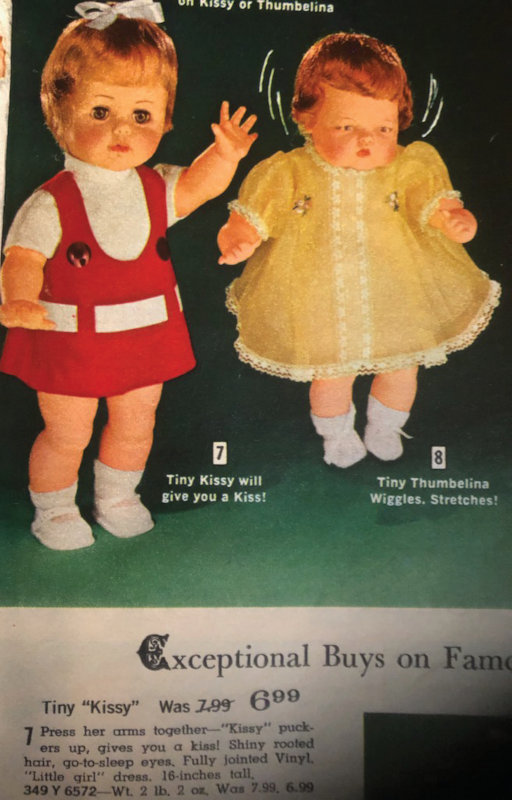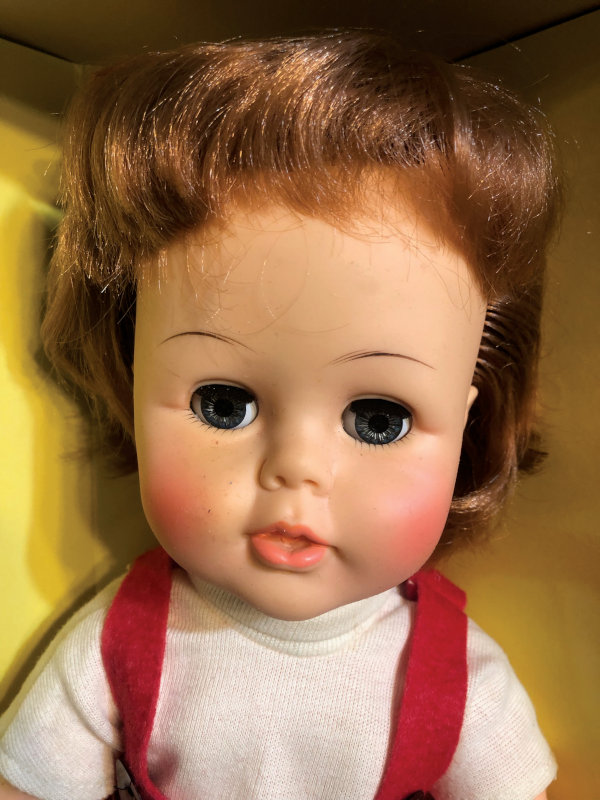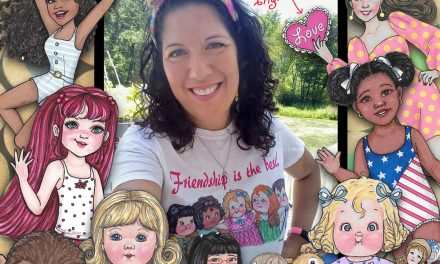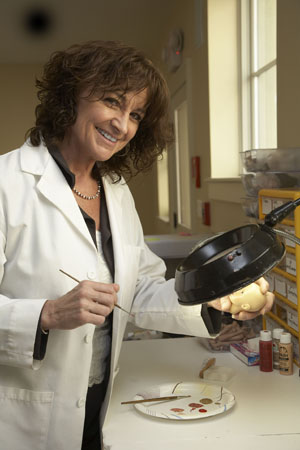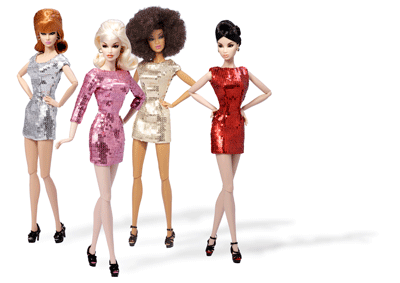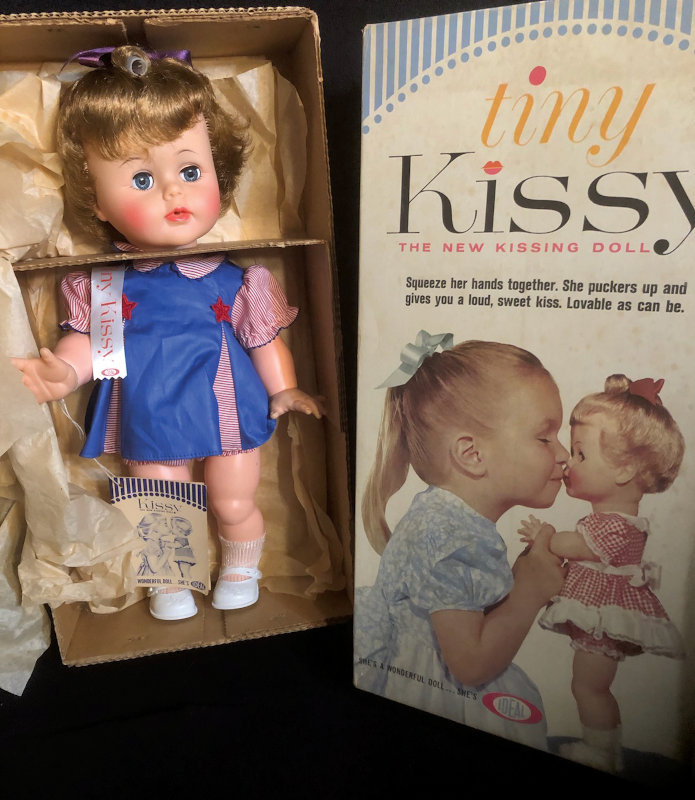
By A. Glenn Mandeville
The early 1960s were a time of rapid change in the toy world, particularly when it comes to dolls. The doll market included toys designed for children as young as 3 years old up to 14 years, from baby dolls and toddlers — some made to be life-sized, like Ideal’s 42-inch Daddy’s Girl — to adult-figured fashion dolls. But the whole market was in the midst of a shakeup.
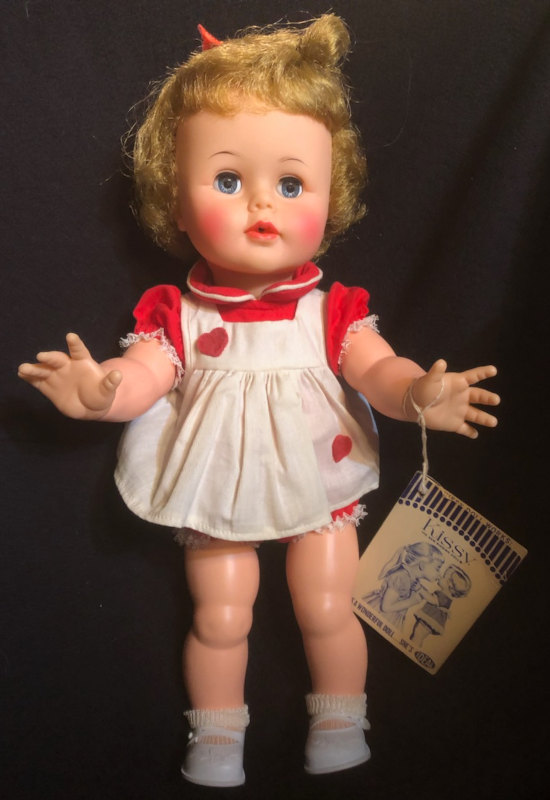
Mattel’s 11.5-inch Barbie, introduced in 1959, was disrupting things on the fashion-doll end, previously dominated by 10.5-inch dolls. Still, toy companies weren’t about to ignore dolls modeled on children; they simply looked for new features to make their designs stand out in the market.
In a personal interview with Ruth Handler, the force behind Mattel, Ruth told me that even her husband, Elliot Handler, was not fully convinced that the Barbie doll would be a success. So to cover all bases, Mattel issued Chatty Cathy in 1960, a pull-string talking doll (voiced by legendary voice actress June Foray) made in the likeness of a 5-year-old girl. This doll, Ruth told me, would create another market should the Barbie doll not be a success.
None of this was wasted on the Ideal Toy Company, which always had its finger on the pulse of the toy buyers. Following their previous success with celebrity dolls such as Shirley Temple, Deanna Durbin, and Judy Garland, in 1961, they introduced Kissy, a 22.5-inch child doll that was well-sculpted, well-dressed, and packaged perfectly to attract parents and children.
Where the wildly successful Chatty Cathy could talk to a child, Kissy, by pressing her hands together, would pucker up and give a kiss, complete with a kissing sound. The doll would be on the market until 1964, along with separate fashions for the doll. However, larger-scale dolls, especially the life-size dolls, were rapidly disappearing from the market during this period. So Ideal introduced a smaller version of Kissy, simply called Tiny Kissy, in 1963.
At 16 inches, the doll had all the features of her larger sister, including similar packaging showing a child receiving a kiss from the doll. This version of Kissy proved to be a success for Ideal and would remain one of their most popular dolls through 1968. Along with additional fashions reflecting the rapidly changing styles of the mid-1960s, Tiny Kissy was marketed with a variety of hair colors and styles.
Special editions were designed for Sears, Montgomery Ward, and Aldens. These special dolls, as well as examples with rare hairstyles and colors, are especially collectible today, with some super-rare items selling for $500.
While the 1960s was a decade of change, the success of dolls such as Tiny Kissy shows that dolls of all ages continue to appeal to children.

